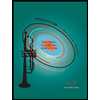a. Use the sales forecaster's prediction to describe a normal probability distribution that can be used to approximate the demand distribution. Sketch the distribution and show its mean and standard deviation. C b. Compute the probability of a stock-out for the order quantities suggested by members of the management team. ( ) c. Compute the projected profit for the order quantities suggested by the management team under three scenarios: worst case in which sales = 10,000 units. most likely case in which sales = 20,000 units, and best case in which sales = 30,000 units. (1 )
a. Use the sales forecaster's prediction to describe a normal probability distribution that can be used to approximate the demand distribution. Sketch the distribution and show its mean and standard deviation. C b. Compute the probability of a stock-out for the order quantities suggested by members of the management team. ( ) c. Compute the projected profit for the order quantities suggested by the management team under three scenarios: worst case in which sales = 10,000 units. most likely case in which sales = 20,000 units, and best case in which sales = 30,000 units. (1 )
Practical Management Science
6th Edition
ISBN:9781337406659
Author:WINSTON, Wayne L.
Publisher:WINSTON, Wayne L.
Chapter2: Introduction To Spreadsheet Modeling
Section: Chapter Questions
Problem 20P: Julie James is opening a lemonade stand. She believes the fixed cost per week of running the stand...
Related questions
Question

Transcribed Image Text:Specialty Toys, Inc., sells a variety of new and innovative children's toys. Management learned
that the preholiday season is the best time to introduce a new toy, because many families use this
time to look for new ideas for December holiday gifts. When Specialty discovers a new toy with
good market potential, it chooses an October market entry date. In order to get toys in its stores
by October, Specialty places one-time orders with its manufacturers in June or July of cach year.
Demand for children's toys can be highly volatile. If a new toy catches on, a sense of shortage in
the marketplace often increases the demand to high levels and large profits can be realized.
However, new toys can also flop, leaving Specialty stuck with high levels of inventory that must
be sold at reduced prices. The most important question the company faces is deciding how many
units of a new toy should be purchased to meet anticipated sales demand. If too few are
purchased, sales will be lost; if too many are purchased, profits will be reduced because of low
prices realized in clearance sales. For the coming season, Specialty plans to introduce a new
product called Weather Teddy. This variation of a talking teddy bear is made by a company in
Taiwan. When a child presses Teddy's hand, the bear begins to talk. A built-in barometer selects
one of five responses that predict the weather conditions. The responses range from "It looks to
be a very nice day! Have fun" to "I think it may rain today. Don't forget your umbrella." Tests
with the product show that, even though it is not a perfect weather predictor, its predictions are
surprisingly good. Several of Specialty's managers claimed Teddy gave predictions of the
weather that were as good as many local television weather forecasters. As with other products,
Specialty faces the decision of how many Weather Teddy units to order for the coming holiday
season. Members of the management team suggested order quantities of 15,000, 18,000, 24,000,
or 28,000 units. The wide range of order quantities suggested indicates considerable
disagreement concerning the market potential. The product management team asks you for an
analysis of the stock-out probabilities for various order quantities, an estimate of the profit
potential, and to help make an order quantity recommendation. Specialty expects to sell Weather
Teddy for $24 based on a cost of $16 per unit. If inventory remains after the holiday season,
Specialty will sell all surplus inventory for Ss per unit. After reviewing the sales history of
similar products, Specialty's senior sales forecaster predicted an expected demand of 20,000
units with a .95 probability that demand would be between 10,000 units and 30,000 units.
Managerial Report
Prepare a managerial report that addresses the following issues and recommends an order
quantity for the Weather Teddy product.
a. Use the sales forecaster's prediction to describe a normal probability distribution that can be
used to approximate the demand distribution. Sketch the distribution and show its mean and
standard deviation. (
b. Compute the probability of a stock-out for the order quantities suggested by members of the
management team. ( )
c. Compute the projected profit for the order quantities suggested by the management team under
three scenarios: worst case in which sales = 10,000 units. most likely case in which sales =
20,000 units, and best case in which sales = 30,000 units. (1 )
d. One of Specialty's managers felt that the profit potential was so great that the order quantity
should have a 70% chance of meeting demand and only a 30% chance of any stock-outs.
What quantity would be ordered under this policy, and what is the projected profit under the
three sales scenarios? (
e. Provide your own recommendation for an order quantity and note the associated profit
projections if Specialty Toys is (i) risk-averse, (ii) risk-neutral (assuming equal chance for the
three sales scenarios), (iii) risk-taker. Provide a rationale for your recommendation. ( .rks)
Expert Solution
This question has been solved!
Explore an expertly crafted, step-by-step solution for a thorough understanding of key concepts.
This is a popular solution!
Trending now
This is a popular solution!
Step by step
Solved in 4 steps

Recommended textbooks for you

Practical Management Science
Operations Management
ISBN:
9781337406659
Author:
WINSTON, Wayne L.
Publisher:
Cengage,

Operations Management
Operations Management
ISBN:
9781259667473
Author:
William J Stevenson
Publisher:
McGraw-Hill Education

Operations and Supply Chain Management (Mcgraw-hi…
Operations Management
ISBN:
9781259666100
Author:
F. Robert Jacobs, Richard B Chase
Publisher:
McGraw-Hill Education

Practical Management Science
Operations Management
ISBN:
9781337406659
Author:
WINSTON, Wayne L.
Publisher:
Cengage,

Operations Management
Operations Management
ISBN:
9781259667473
Author:
William J Stevenson
Publisher:
McGraw-Hill Education

Operations and Supply Chain Management (Mcgraw-hi…
Operations Management
ISBN:
9781259666100
Author:
F. Robert Jacobs, Richard B Chase
Publisher:
McGraw-Hill Education


Purchasing and Supply Chain Management
Operations Management
ISBN:
9781285869681
Author:
Robert M. Monczka, Robert B. Handfield, Larry C. Giunipero, James L. Patterson
Publisher:
Cengage Learning

Production and Operations Analysis, Seventh Editi…
Operations Management
ISBN:
9781478623069
Author:
Steven Nahmias, Tava Lennon Olsen
Publisher:
Waveland Press, Inc.